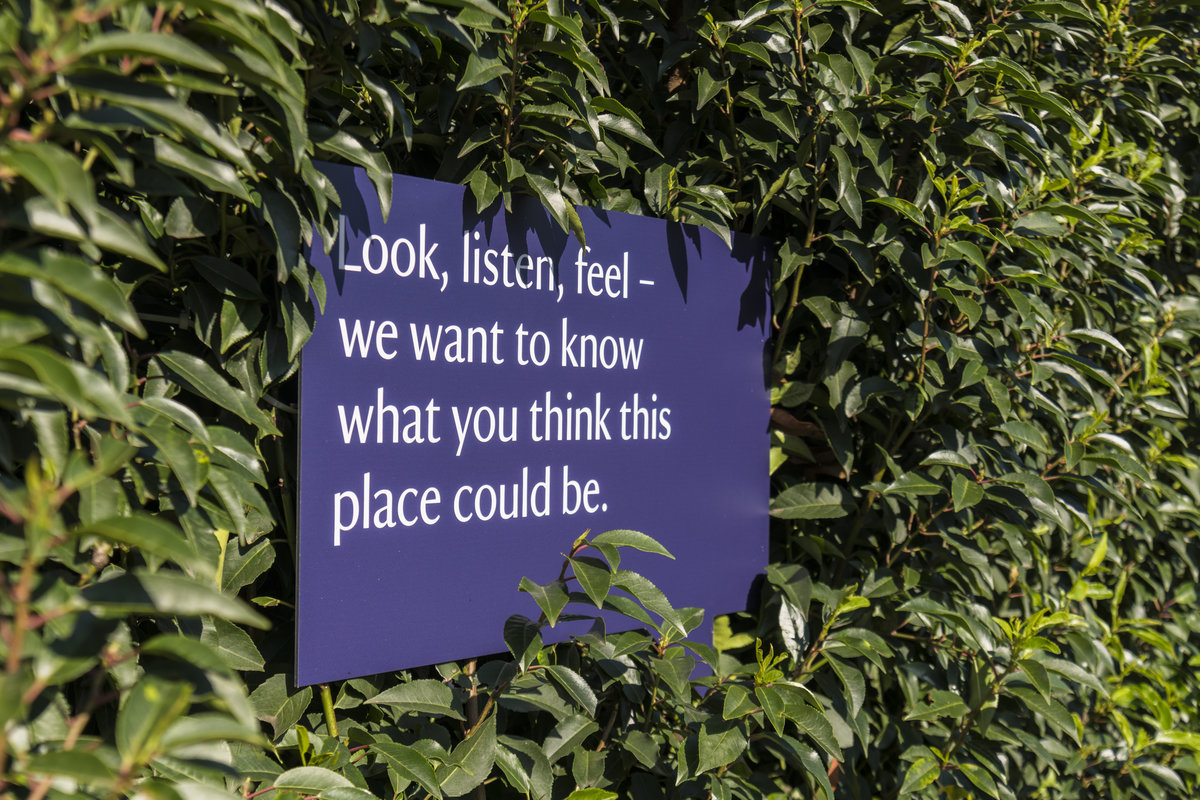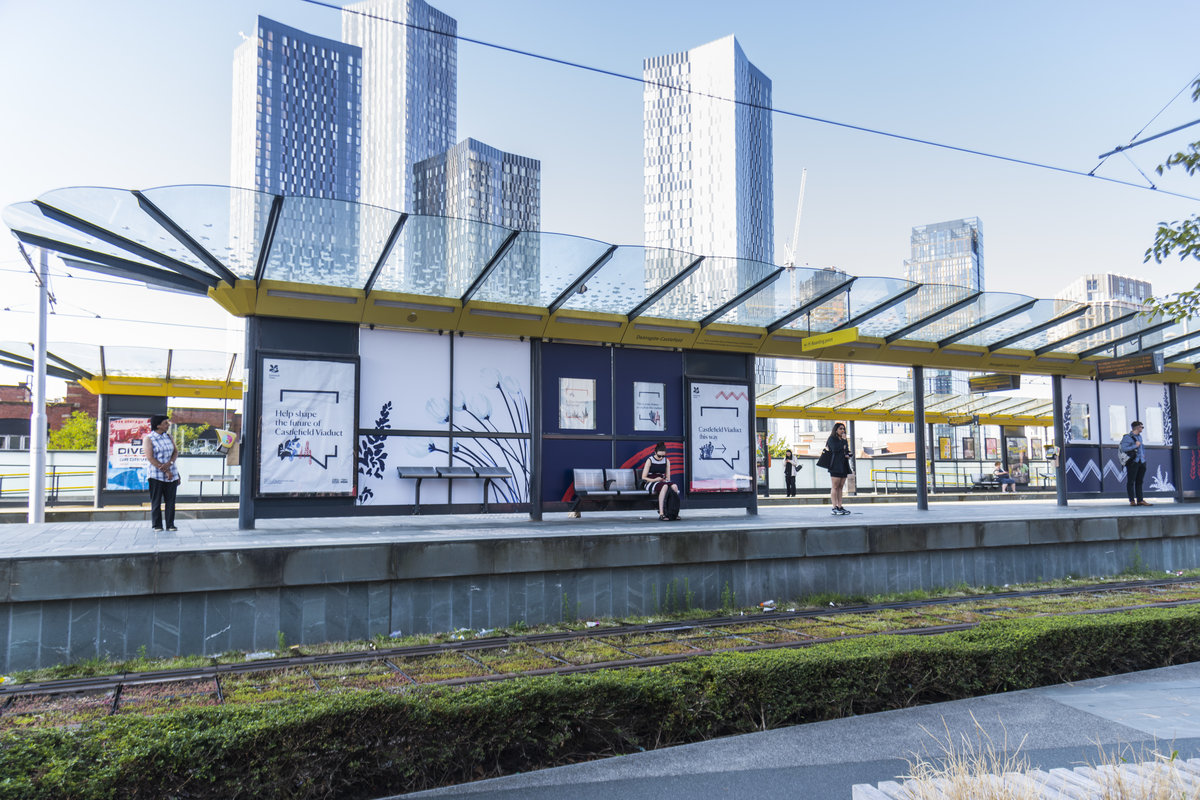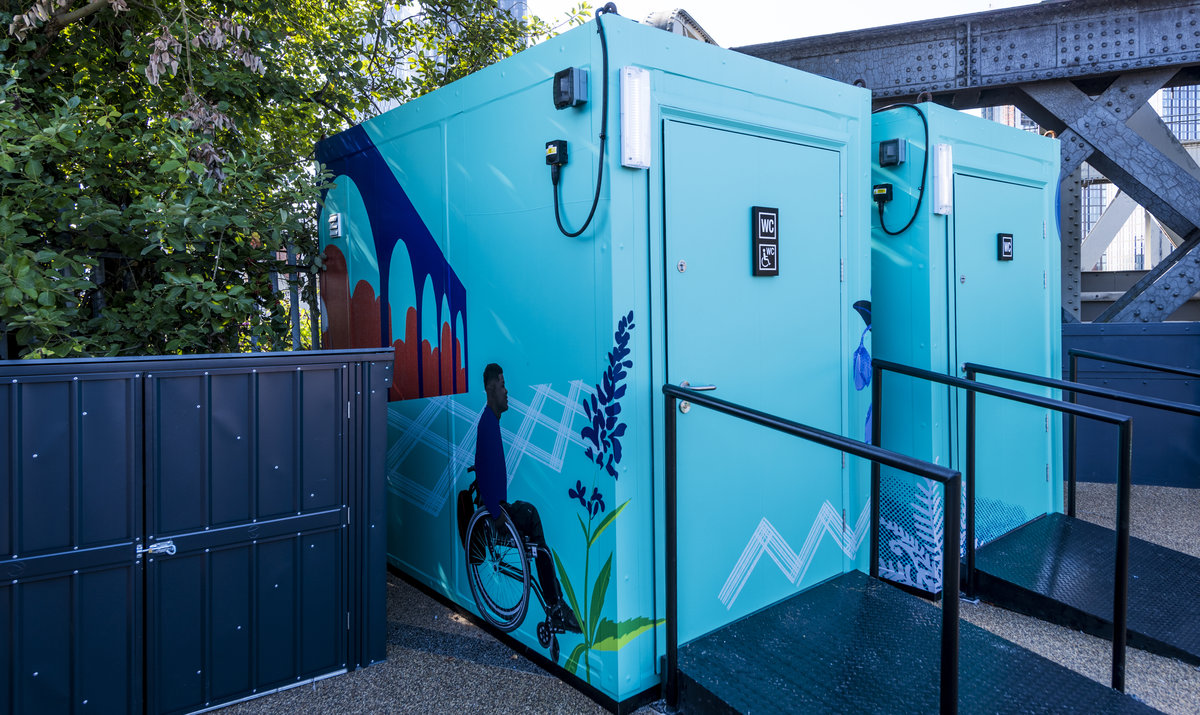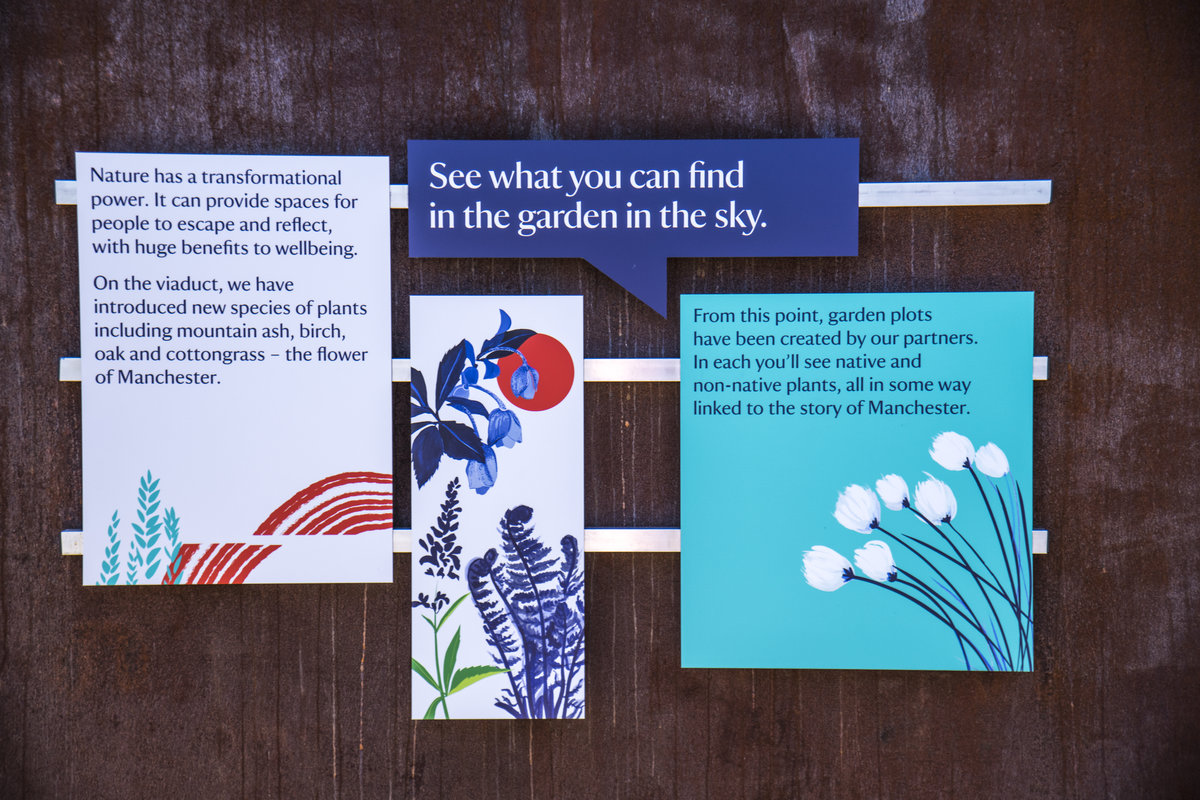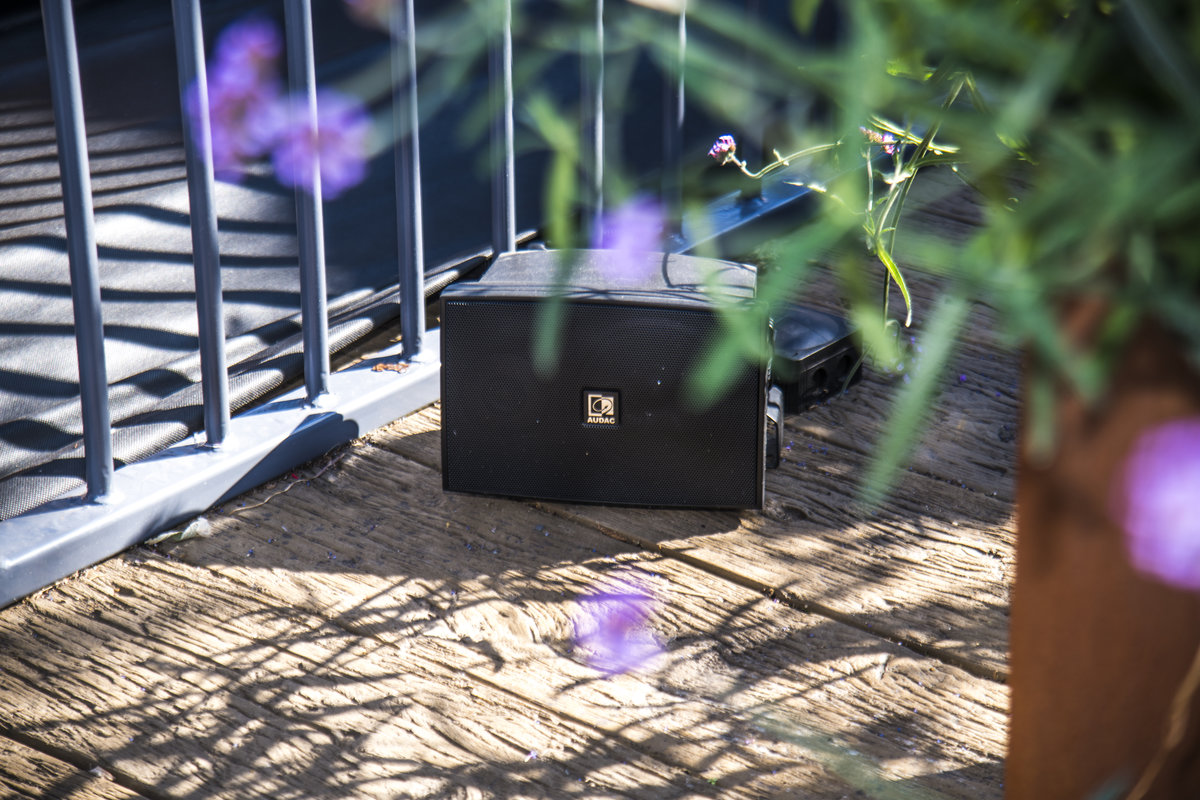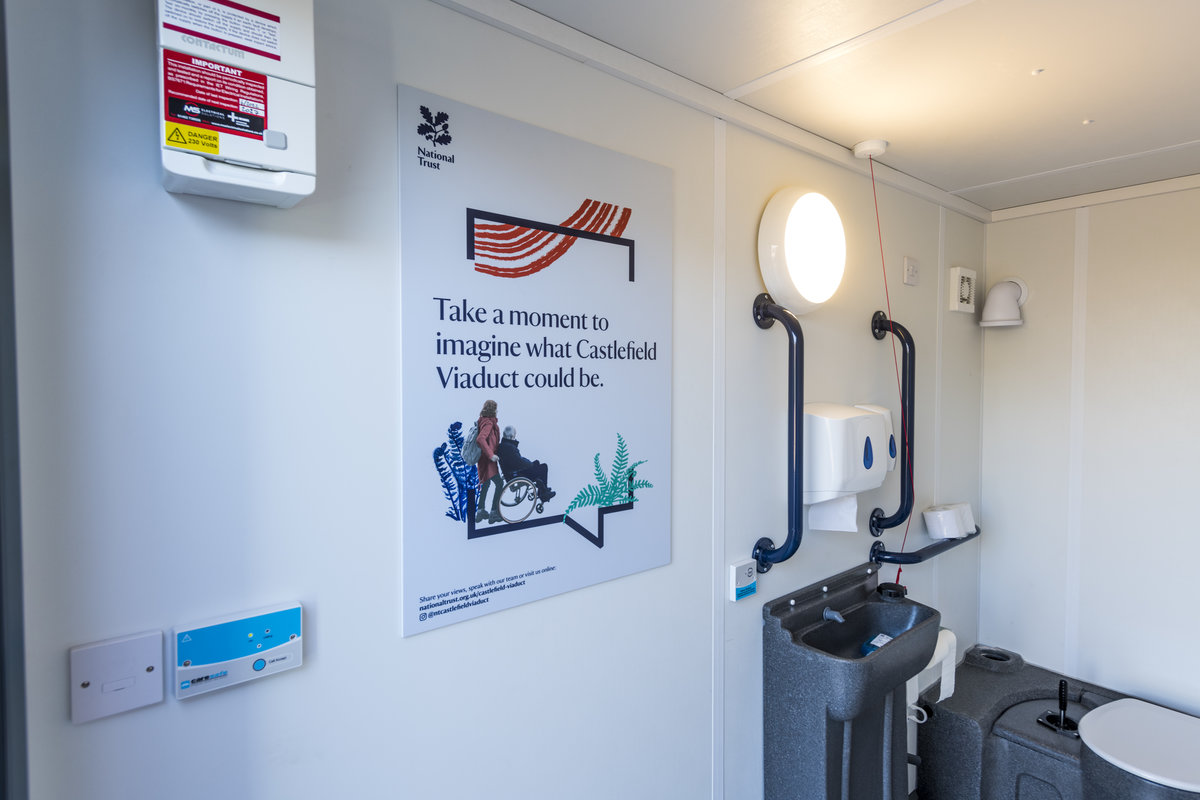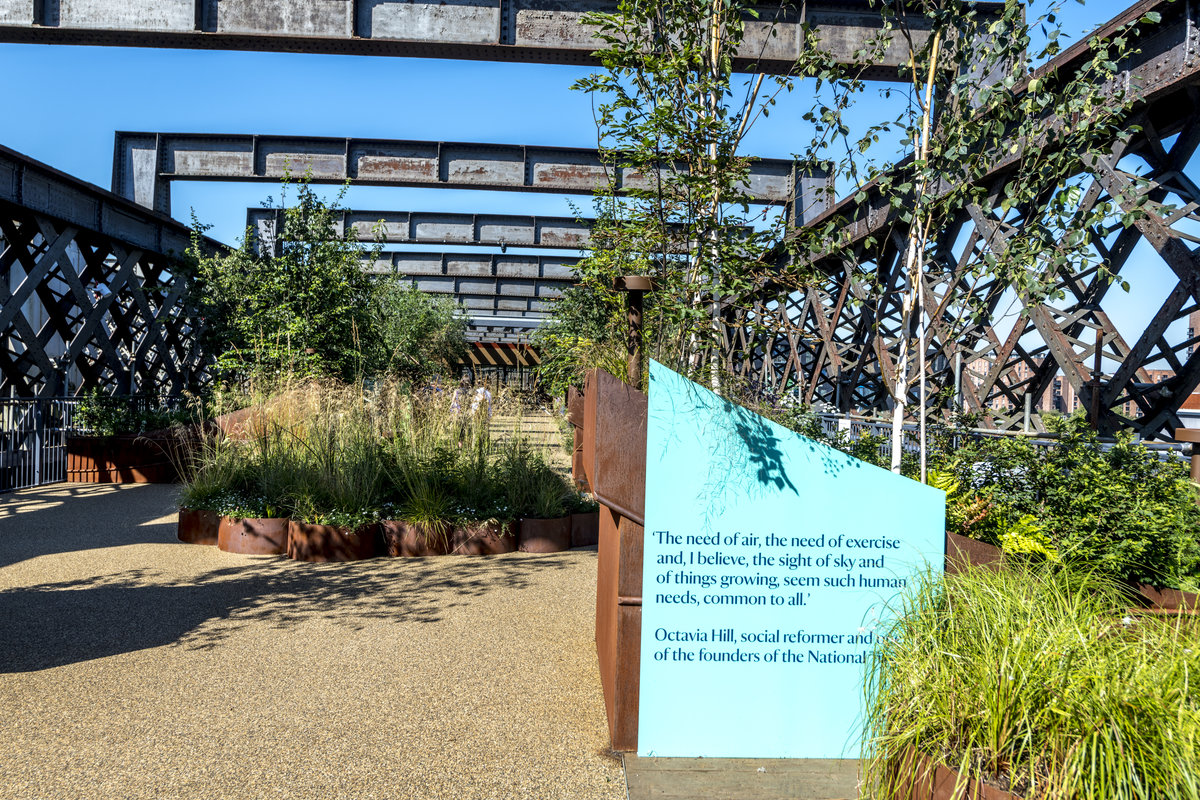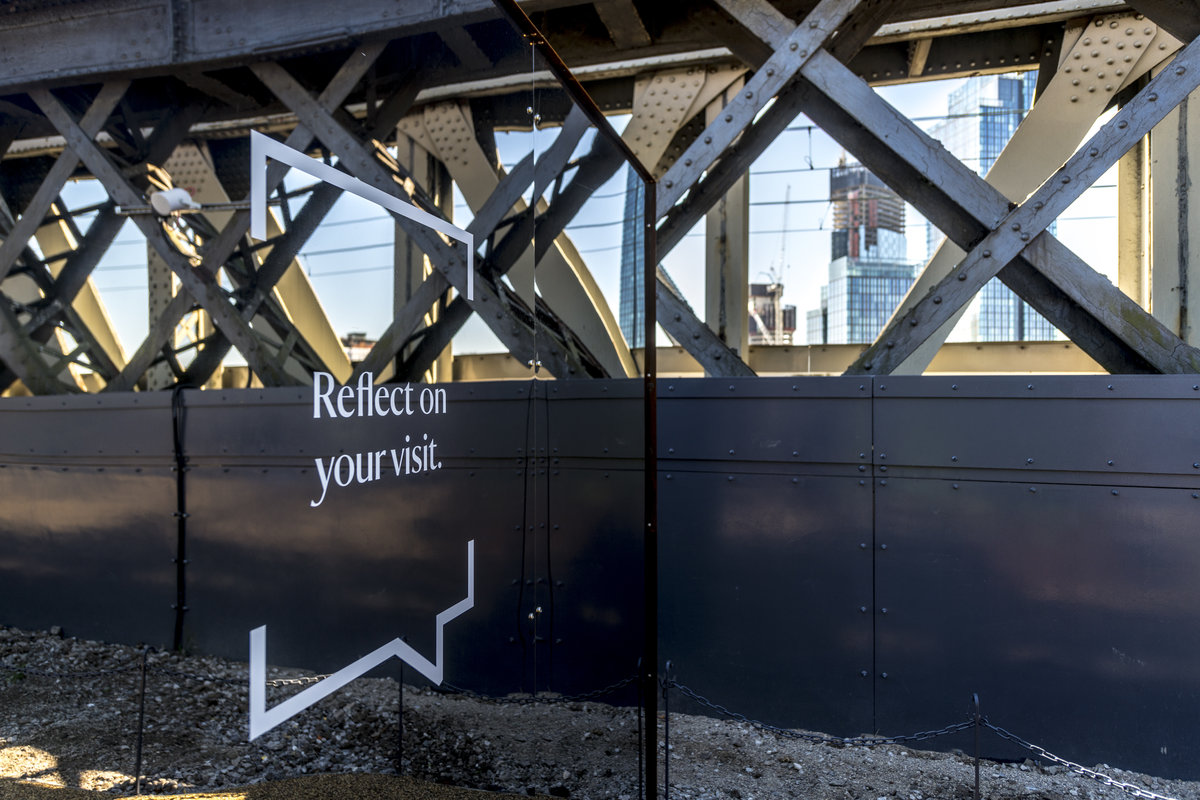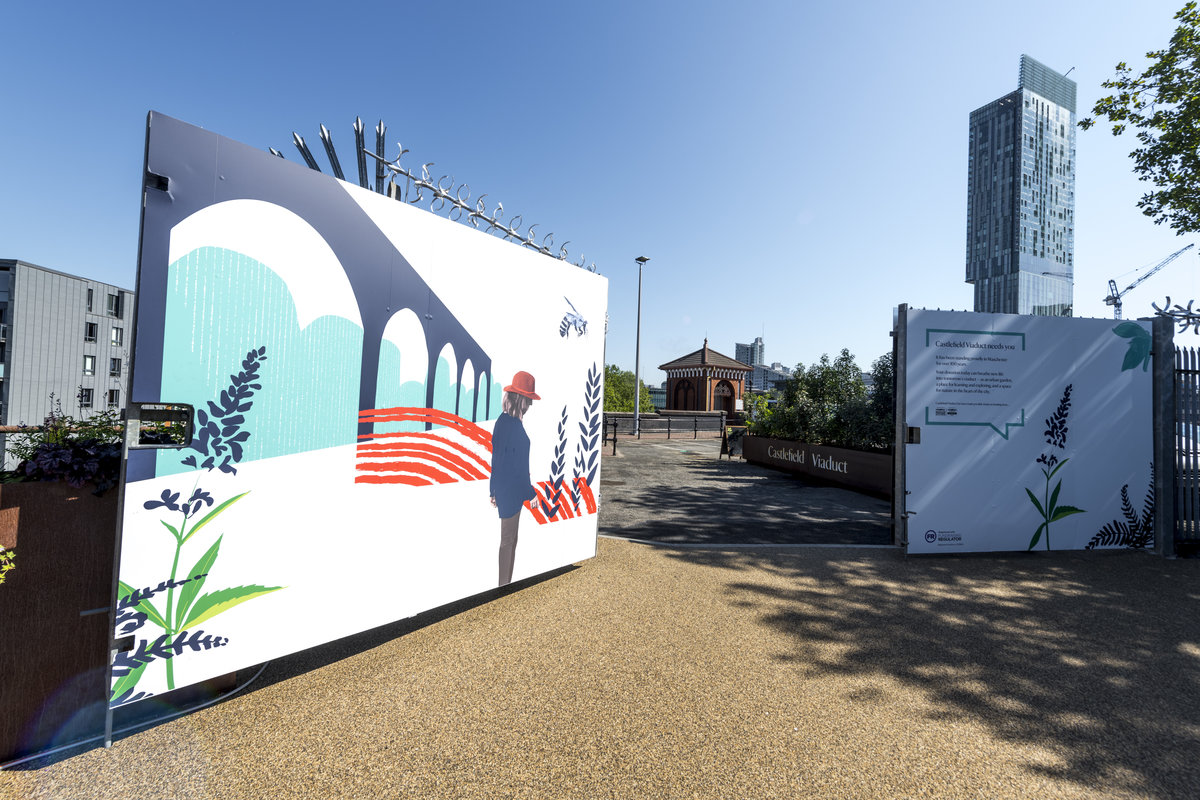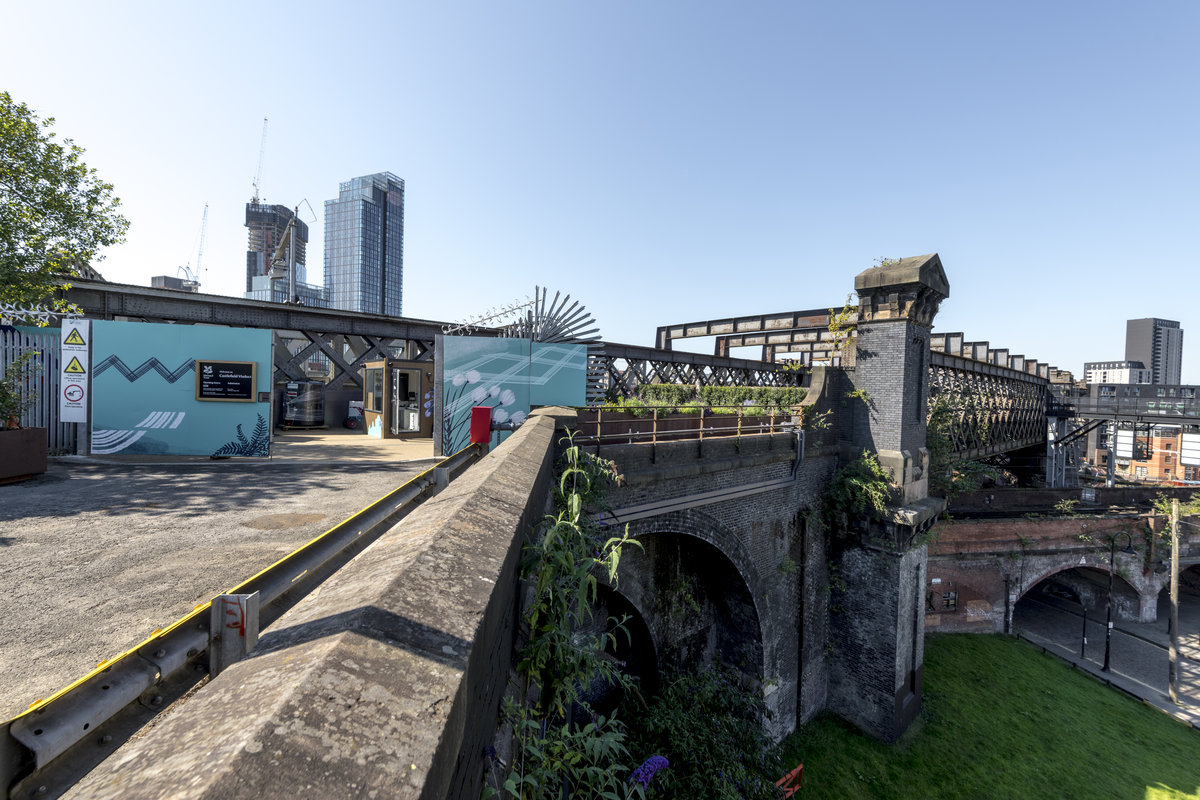After 50 years sitting disused in the centre of Manchester, the National Trust has brought new life to Castlefield Viaduct. It’s been transformed into a green oasis for the people of Manchester.
Creative Concern was commissioned by the National Trust to develop the interpretation strategy for the viaduct. The overarching concept, ‘Views from the viaduct’, invites visitors to look to the past, contemplate the future, and feedback on what they would like to see from the space.
Following interviews with people in the community, discussion topics were chosen to be centered around three themes – the viaduct’s potential; connections to the city’s heritage; and the power of nature. These themes were the building blocks of a narrative to tell a story of the viaduct’s past present and future. A story now told by the interpretation panels in the space.
